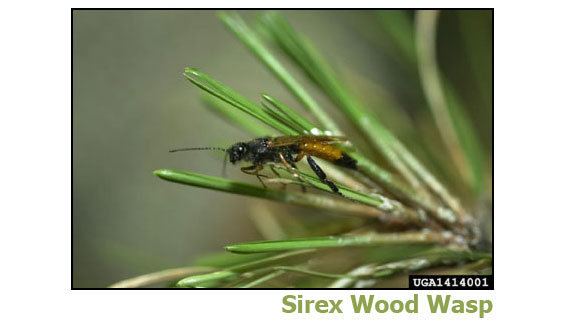

Sirex Wood Wasp
Photo credit: David R. Lance, USDA APHIS PPQ, Bugwood.org
What is it?
A 1-1.5 inch long wasp with a metallic blue-black body. Males have orange segments on their abdomens.
Where's it from?
Europe, Asia, and northern Africa
How did it get here?
It is frequently encountered at ports of entry in the wood of shipping crates.
Where is it now?
Sirex has become a serious pest in countries such as South Africa, New Zealand, and Australia. In 2005, pest surveys in New York discovered sirex away from ports in mixed hardwood forests of over 25 counties. It has since spread to northern Pennsylvania.
What's the harm?
While there are native woodwasp species in North America, only the non-native Sirex noctilio aggressively attacks healthy trees. Tree mortality is brought about by the female wasp. As she lays her eggs in the host tree, she injects a symbiotic fungus along with a toxic mucus. Together, the mucus and the fungus kill the tree. Wasp larvae feed on the fungus. Southern hemisphere pine plantations infested by sirex have seen tree mortality as high as 80 percent.
What's being done?
Monitoring continues in order to detect the spread of the wasp.
How can I learn more?
Visit na.fs.fed.us/spfo/pubs/pest_al/sirex_woodwasp/sirex_woodwasp.htm.
 Virginia Invasive Species
Virginia Invasive Species